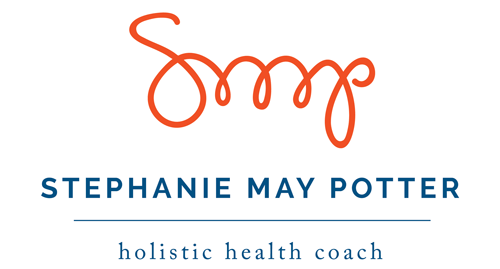How To Reduce Your Use of Plastic (with My Simple Tips, Strategies & Favorite Products)
photo cred: Ben Krygsman
By now we all know that single use plastic is overtaking our ocean and beaches as well as harming marine life. Additionally, the chemicals in plastic can release harmful chemicals that end up in our water supply and in the seafood and meat products that we consume.
Toxic chemicals are in your home and body. I recently saw this stat from Dr. Stephen Cabral that BPA is found in 9 out of 10 Americans. What I didn’t realize until I really started diving into hormone health, is that plastic can really wreck havoc on our endocrine system starting at a very early age and causing increased inflammation along with infertility and birth defects-not good news.
I’ve included some stats and background first but please keep scrolling down for my simple strategies and my favorite products to help make the transition easy and fun. Bottom line, we can’t completely avoid plastic containers; however, the goal is to reduce our exposure, especially when we’re heating food (even when a plastic bag says that it’s microwavable).
So, why is plastic toxic?
Many chemicals, like BPA, are highly estrogenic, which means that they can potentially cause high estrogen levels in both men and women and contribute to birth defects in children. Even in packaging labeled “BPA-free,” there may be similar compounds like BPS, which can be just as harmful and also disrupt our endocrine system. Additional implication of the toxins in plastic can contribute to early onset of puberty, breast cancer, and more IBS based issues. The reason is that an increase in estrogen can contribute to an increase in inflammation—yikes!
Phthalates are chemicals added to plastics to soften. They used to be very common in children’s toys but have been banned in recent years. Phthalates are still common in foods due to plastic tubing used in processing and plastic packaging. Phthalates are implicated in reduced male fertility and reproductive birth defects, as well as hyperthyroidism.
Here is a great podcast for more information.
Bottom line—recycling your plastic containers and water bottles simply isn’t enough. Here are a few facts (from earthday.org)
Humans buy about 1,000,000 plastic bottles per minute in total. Only about 23% of plastic bottles are recycled within the U.S.
Americans purchase about 50 billion water bottles per year, averaging about 13 bottles per month for every person in the U.S.! By using a reusable water bottle, you could save an average of 156 plastic bottles annually.
Half a million straws are used in the world every day
Only 1% of plastic bags are returned for recycling. Americans throw away 100 billion plastic bags annually. That’s about 307 bags per person!
Here are my 7 tips and strategies to reduce your plastic usage and create a safer home environment:
Buy stainless or glass water bottles (and keep one with you at all times). Leave one at your office, in your car, at school (for your kids) etc. Let your kids pick out one for school and for sports so that you don’t have to resort to using a plastic bottle. Refill the bottle whereever you find a filtered drinking fountain (it’s best to avoid tap water). Plus, this will help you stay hydrated and avoid sugary drinks :)
Here are my favorite water bottles: Stainless Steel, Swell, Hydro Flask, LIfefactory
Slowly swap out your plastic reusable food containers at home. No need to purge every plastic container in your house all at once (my house is not 100% plastic free). My approach is to swap out the oldest ones first and start to purchase new glass containers. Costco is a great place to start to upgrade several containers for food storage but here are my favorite products:
Mason jars for grains, nuts, seeds, vegetables etc. I also use them for my smoothies when I’m on the go.
As I was writing this blog post I discovered new food storage containers from a friend and was so impressed with them that I immediately placed an order. Fregoliving, is a small, woman owned business in the Twin Cities that created amazing plastic-free lunch/food storage containers. The containers are not only plastic free (and safe for families and the planet) but shatterproof, leakproof and dishwasher and oven safe. I can’t wait to use them when they arrive in two days!
BYO straw. Even Starbucks has jumped on the no plastic straw bandwagon. I’ve been using these stainless steel ones at home now for years but my daughter found these cute collapsible and travel friendly straws that even come with their own case.
Buy a reusable coffee cup (and bring it with you). I gave this Yeti cup to my husband as a gift last year and even he started bringing it with him on road trips. I bring my cup everywhere, including the hockey rink where you will always see me drinking a cup of tea to stay warm.
BYO Wine/cocktail glass-I started giving this S’well wine tumbler as gifts to girlfriends last year (and found a local store who will monogram them too). I bring mine EVERYWHERE including vacations and neighborhood parties. I also use mine for tea and my warm water with lemon that I drink daily. Beverages stay hot and cold. I also have several of these glass/silicon wine glasses
Bring reusable bags to the grocery store
I’ve had this set of grocery bags for several years now and they are the best!
I use these produce bags every time I go to the grocery store (keep them in your grocery bags)
Buy in bulk and at Farmers’ Markets to get products with less packaging (and more whole foods)
Swap out your plastic ziploc bags for these silicon Stasher bags. I use these for snacks, kids’ lunches, to sous vide meat, freeze bananas, greens, muffins, protein balls, breakfast cookies etc.
What are you going to start doing today to reduce your reliance on plastic containers? Comment below and let

